Véhicule Blindé Léger
| VBL | |
|---|---|
|
VBL of the 1st Parachute Hussard Regiment in Afghanistan, with wire snag/cutter braced on hood. | |
| Type | Scout car |
| Place of origin | France |
| Production history | |
| Produced | 1990 – present |
| Specifications | |
| Weight | 3.5 to 4 tonnes |
| Length | 3.80 m (4.00 m long version) |
| Width | 2.02 m |
| Height | 1.70 m |
| Crew | 2-3 |
|
| |
| Armour | STANAG level 1 (protection against 7.62×51 NATO rounds and shrapnel) |
Main armament | depends on the version |
Secondary armament | none |
| Engine |
Peugeot XD3T turbo-diesel or Steyr M14 VTI 95 hp (70 kW) (Peugeot) 129 hp (96 kW) (Steyr) |
| Power/weight | 27–23.75 hp/t |
| Suspension | 0.35 m ground clearance |
Operational range | 600 km (can be extended to 1000 km with external gas tanks) |
| Speed | 95 km/h |
The Panhard Véhicule Blindé Léger ("Light armoured vehicle"), also known by its acronym Panhard VBL or simply VBL, is a French wheeled 4x4 all-terrain vehicle built by Panhard. The vehicle is offered in various configurations, and was designed to combine the agility of the Peugeot VLTT liaison vehicle with adequate protection against small arms fire, artillery fragments, mines and NBC weapons.
The VBL is fully amphibious and can swim at 5.4 km/h; it is also air transportable by C-130, C-160 and A400M. It was developed during the 1980s and entered operational service in France in 1990. It has a fuel consumption of 16 litres per 100 km.
Combat experience
The VBL has been used in many peacekeeping operations, notably in Bosnia, Lebanon, Somalia and Kosovo.
In the 2000s and 2010s, the VBL has also been used by French forces in Ivory Coast, in Afghanistan and in Northern Mali.
Due to the contribution of the French Army to the Blue Helmets in Yugoslavia, the VBL was one of the ubiquitous sights in the Siege of Sarajevo, earning it the nickname of "Sarajevo Taxi".
The Nigerian Army used the Panhard VBL M11 during Counter Insurgency operations in the Niger Delta, the Jos Plateau as well as counter-insurgency operations in the North of the Country in 2013. The Nigerian Army versions carry a .50 BMG (12.7x99mm NATO) Browning HMG.
Variants
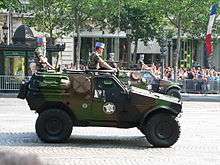
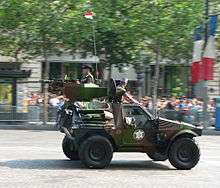
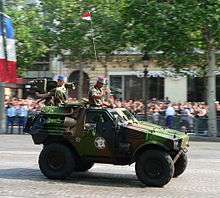
French versions
- VBL MILAN: Anti-tank medium range (up to 2000 metres) combat. It uses one MILAN missile fire unit with six missiles, and mounts a MIRA Thermal camera.
- VBL ERYX: Anti-tank short range (up to 600 metres) combat. Uses one ERYX missile fire unit and four missiles, as well as MIRABEL thermal goggles. Its secondary weapon is a ring-mount fitted with a 7.62 mm machine gun (1400 rounds).
- VB2L POSTE DE COMMANDEMENT: ("VBL Long") Command version. Lengthened version that operates a VHF system with two PR4G radios, a HF System with one SSB radio for long range and a Radio/intercom system for the crew. Its armament is a ring-mount fitted with a 7.62 mm machine gun (1400 rounds). Specific equipment: A work station with map board and folding table, additional batteries to meet the requirements of the radio and auxiliary services giving up to 8 hours additional endurance, and a folding seat for 4th crew member.
- VBL RECO 12.7: reconnaissance and troops engagement. Operates 1 VHF transmitter/receiver (French version), radio/intercom system and one M2 machine gun on ring-mount protected by side armour. Optional equipment : multiple launcher for anti-personnel grenades FLY-K (PL 127) - Rate of fire : 375 rounds/minute - muzzle velocity: 244 m/s, Effective range : against an area: 2200 m; against point target: 1500 m, Fragmentation effect : 15 m - armour penetration: 50 mm.
- VBL AT4CS: an anti-tank very short range (less than 250 metres) version. Operates 1 or 2 VHF transmitter/receivers, radio/intercom system, and a x 84 mm AT4CS munitions in ready-use configuration capable of penetrating 550 mm of armour (armoured vehicles without additional protection) or 1.5 m of concrete. Usable dismounted or in confined spaces). Secondary weapon: One ring-mount fitted with a 7.62 mm machine gun (1400 rounds).
The reconnaissance version is equipped with TR-VP 213 or PR4G radio, OB 41 and OB 43 night vision goggles and DUK-DUR 440 radiation meter and a dosimeter.
Export versions
- ULTRAV M11: NBC (Nuclear Biological Chemical) reconnaissance version.
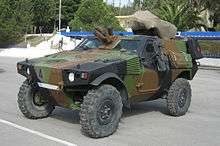
- VBL TOW: Anti-tank long range (up to 3750 metres). Radio equipment: 1 or 2 VHF transmitter/receivers. Armament: One infantry-type single TOW tube: Day/night operation using integral night sight system (4 missiles). Secondary weapon: One ring-mount fitted with a 7.62 mm machine gun (2000 rounds).
- VBL ALBI-MISTRAL: Air defense (currently developed). Radio equipment : 2 VHF PR4G transmitter/receivers (1 for tactical links; 1 for firing system data transmission). Armament: Twin-round ALBI turret firing the MISTRAL "fire-and-forget" air defence missile, 6 missiles including 2 on the fire unit. Secondary weapon: One semi-circular rail fitted with a 7.62 mm machine gun (1200 rounds).
- VBL (à flancs redressés) CANON: With an automated 20 mm turret. Radio equipment : 1 VHF transmitter/receiver. Armament: MK 20 Rh 202 automatic 20 mm cannon (Rate of fire: 1000 rounds/minute, Elevation range: −10° to +45°, Rounds carried: 260, Munitions loaded: 160 (60 left, 100 right), Sight: ZEISS PERI-Z-16, Optional equipment associated with the turret: laser range finder, thermal imager).
- VBL TOURELLE FERMEE: With a 12.7 mm remotely controlled turret. Radio equipment: 1 or 2 VHF transmitter/receivers. Armament includes a 12.7 mm or 7.62 mm machine gun or automatic 40 mm grenade launcher (munition capacity: 600 rounds, day/night camera, laser rangefinder).
Operators
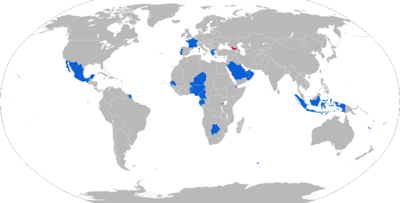
.jpg)
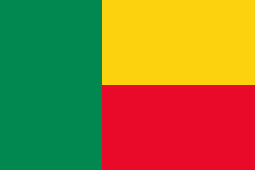




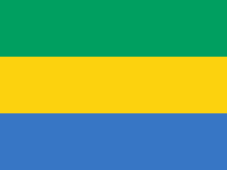









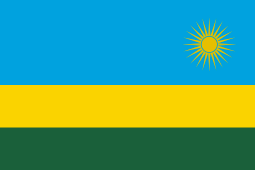




Former operators

See also
- Panhard AML
- Puma (AFV) of Italy
- Komatsu LAV of Japan
- Otokar Cobra of Turkey
References
External links
| Wikimedia Commons has media related to VBL. |
- specialoperations.com
- (in French) description
- VBL Update
- VBL on Armour.ws